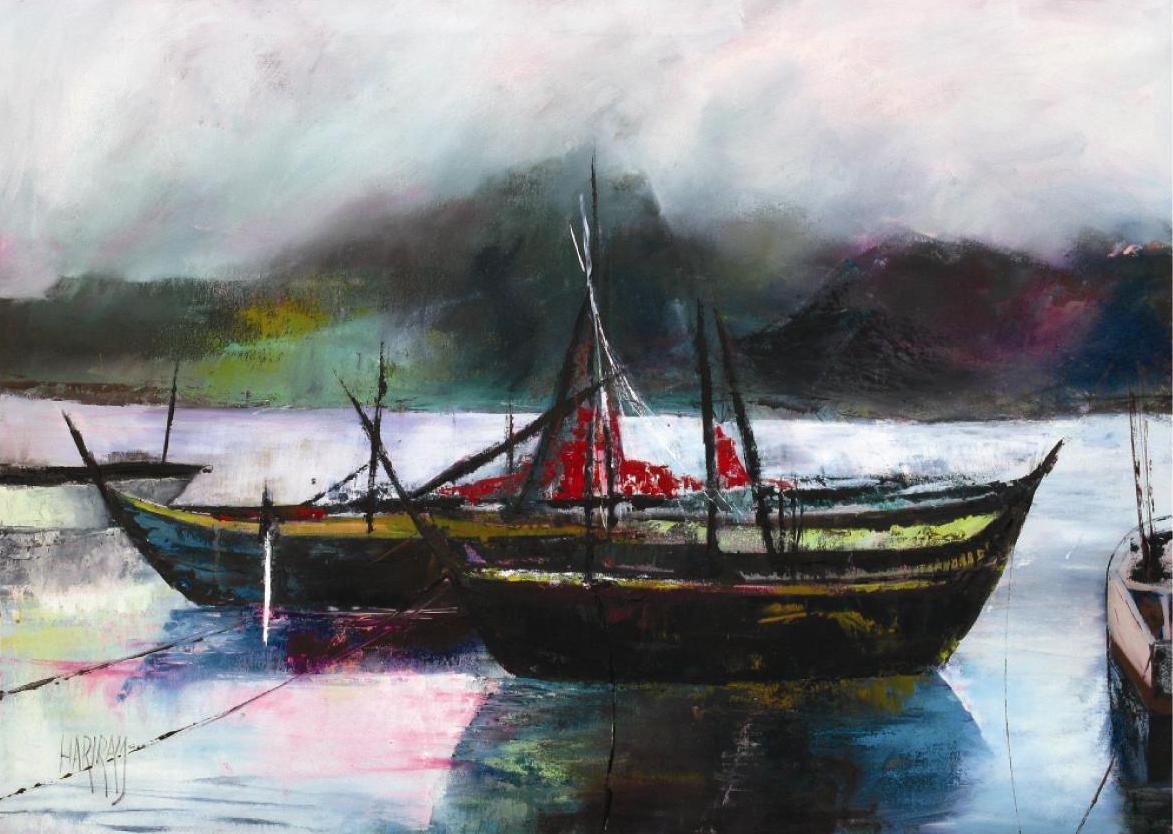Landscape paintings hold a unique place in the world of art, offering viewers an escape into the natural world through the eyes of the artist. These masterpieces, rooted in nature’s beauty, have evolved over centuries to become a cornerstone of artistic expression. From serene meadows to dramatic mountain ranges, landscape art captures the essence of our environment, allowing us to experience its wonders from any setting.
A Brief History of Landscape Paintings
The tradition of landscape painting dates back thousands of years, though it wasn’t always a primary subject in art. Early civilizations, such as the Egyptians and Mesopotamians, incorporated natural elements in their art, often as backdrops to human or divine figures.
The true celebration of nature as a standalone subject emerged in ancient Chinese and Japanese art. Artists in these cultures used ink and watercolors to depict mountains, rivers, and forests with a deep spiritual connection to nature.
In Western art, the Renaissance era marked the rise of landscape art. Artists like Leonardo da Vinci and Albrecht Dürer began incorporating realistic landscapes into their works. However, it was during the 17th century, particularly in the Dutch Golden Age, that landscapes became an independent genre. Painters like Jacob van Ruisdael and Claude Lorrain brought meticulous detail and atmospheric depth to their depictions of nature.
The Romantic era in the 18th and 19th centuries elevated landscape paintings to new heights. Artists like J.M.W. Turner and Caspar David Friedrich used dramatic lighting, vivid colors, and emotive compositions to evoke the sublime power of nature.
Key Characteristics of Landscape Art
Landscape art is more than a visual representation of the natural world; it reflects the artist’s emotions, perspective, and connection to their surroundings. Here are some defining characteristics:
- Focus on Nature
Landscape paintings prioritize natural elements such as mountains, rivers, trees, and skies. They often exclude human figures or minimize their presence to emphasize the grandeur of nature. - Atmosphere and Mood
Artists use color, light, and texture to convey mood. A calm lake at sunset might evoke serenity, while a stormy sky can suggest drama or tension. - Perspective and Depth
One of the hallmarks of great landscape art is its ability to draw viewers into the scene. Techniques like linear and aerial perspective create a sense of depth, making the painting feel expansive. - Variety of Styles
Landscape art spans a wide range of styles, from realistic depictions to abstract interpretations. Whether through Impressionism’s fleeting light effects or modern minimalism, landscapes continue to inspire diverse approaches.
Famous Landscape Paintings and Artists
Claude Monet: Master of Impressionist Landscapes
Claude Monet revolutionized landscape art with his Impressionist works. His series, such as Water Lilies and Haystacks, explored how light and atmosphere transformed the natural world at different times of the day.
Vincent van Gogh: Emotional Landscapes
Van Gogh’s landscapes, like Starry Night and Wheatfield with Crows, are imbued with intense emotion and bold, swirling colors. His works capture both the beauty and turmoil of the natural world.
Georgia O’Keeffe: Abstract Landscapes
Georgia O’Keeffe brought a modern perspective to landscapes, depicting the vast deserts and canyons of the American Southwest. Her works, like Red Hills with Flowers, blend abstraction with the natural world’s essence.
Albert Bierstadt: The Sublime Wilderness
A leading figure in the Hudson River School, Bierstadt painted majestic American landscapes like Among the Sierra Nevada Mountains. His works celebrated the vastness and untouched beauty of nature.
Modern Interpretations of Landscape Art
In contemporary art, landscape paintings continue to thrive, though the genre has expanded beyond traditional approaches. Many modern artists experiment with abstraction, digital techniques, and unconventional materials to interpret the natural world.
Environmental Themes
Modern landscape artists often address pressing environmental issues such as climate change and deforestation. Their works serve as visual commentaries on humanity’s impact on the planet.
Urban Landscapes
While traditional landscape paintings focus on rural or wild settings, modern interpretations frequently explore urban environments. Artists depict cityscapes, industrial areas, and metropolitan skylines as reflections of human habitation within the natural world.
The Appeal of Landscape Paintings
Connection to Nature
In a fast-paced, technology-driven world, landscape paintings provide a sense of calm and connection to nature. They allow viewers to escape the stresses of daily life and immerse themselves in the beauty of the outdoors.
Timeless Inspiration
Whether it’s the vibrant hues of a sunset or the quiet stillness of a forest, landscapes inspire artists and viewers alike. These scenes remind us of the simple, enduring beauty of the natural world.
Versatility in Expression
Landscape art resonates with a broad audience because it is versatile. Artists can depict a vast array of emotions, perspectives, and styles, ensuring that there’s a landscape painting for every taste.
How to Appreciate Landscape Art
To fully appreciate a landscape painting, take a moment to observe its details and consider the artist’s intentions. Look at the composition, the use of light and shadow, and the emotions it evokes. Imagine yourself stepping into the scene and experiencing the world the artist has created.
Conclusion
Landscape paintings are a celebration of nature’s beauty and power. They bridge the gap between humanity and the environment, offering a timeless source of inspiration and reflection. As we continue to navigate the complexities of the modern world, landscape art reminds us of the serenity and splendor that nature provides, urging us to cherish and protect it.



